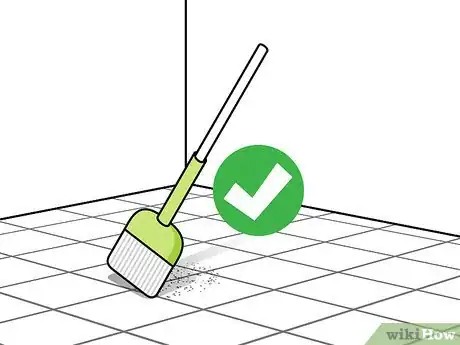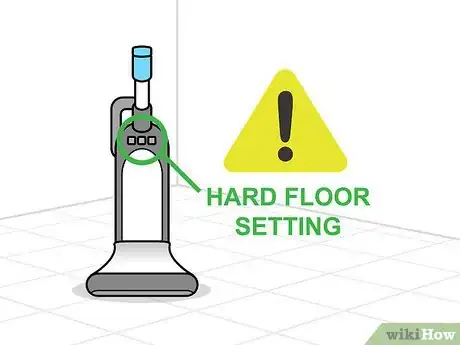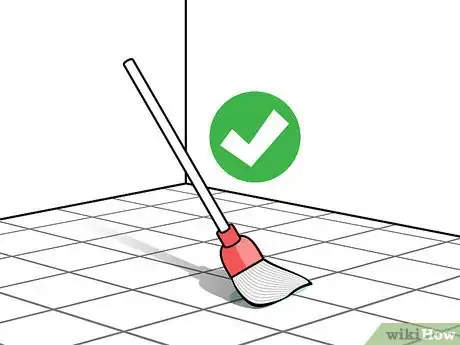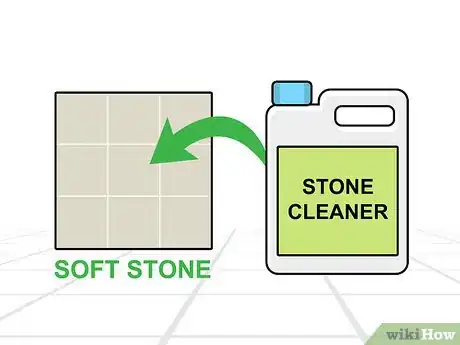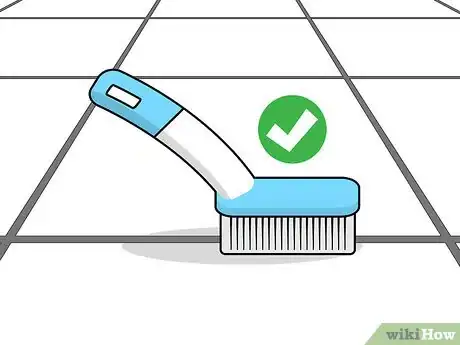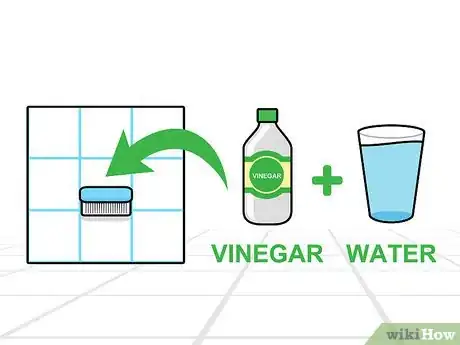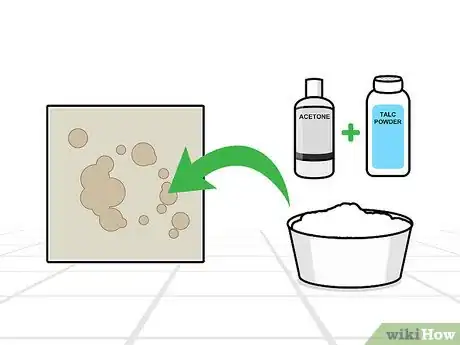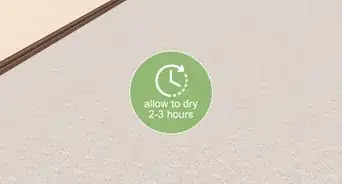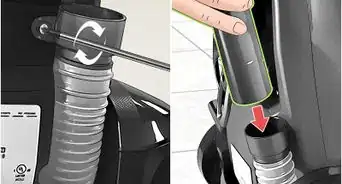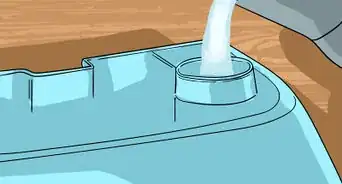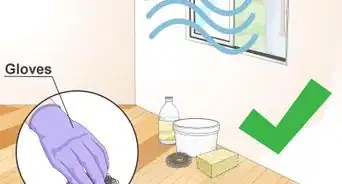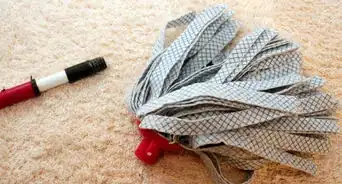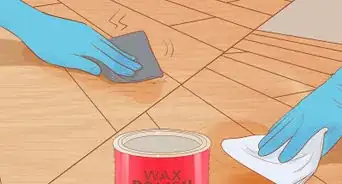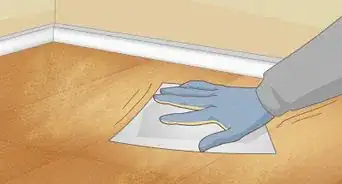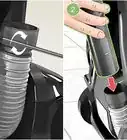This article was co-authored by Michelle Driscoll, MPH. Michelle Driscoll is the Owner of Mulberry Maids, which is based in Fort Collins, Colorado. With five years of experience, her business specializes in cleaning homes and small offices. She holds a Masters in Public Health from the Colorado School of Public Health. Additionally, Mulberry Maids has an A+ rating from the Better Business Bureau.
This article has been viewed 52,318 times.
Stone tile floors are a great investment, because they’re durable and beautiful. Plus, crumbs and dust bunnies are often hidden by the natural stone variation. Fortunately, since they’re so durable and naturally beautiful, cleaning stone tile floors is straightforward. Regularly clean them with a soft mop and gentle cleaner, scrub the grout, and remove stains if you need to.
Steps
Doing Routine Maintenance
-
1Sweep with a soft broom every day. Dirt and crumbs can build up and potentially scratch your tile, so make sure you sweep it up every day. Use a soft bristle broom and a dustpan with a rubber edge.[1]
-
2Make sure your vacuum has a hard floor setting. If you want to use your vacuum on your stone tile floors, make sure it has a hard floor setting. Look under your vacuum to be sure it doesn’t have rotating brush heads either. Don’t scratch your stone tile floors!Advertisement
-
3Mop with a soft sponge or mophead weekly. Keep grime at bay by mopping stone tile floors weekly. Use a soft mop head or sponge and don’t drench the floors with water. Dampen a mop with the cleaning solution and wash dirt away.
- Use diluted general floor cleaner on harder stone floors, such as granite and slate.
- Use stone cleaner on softer stone, such as marble and limestone.
-
4Use a stone cleaner on soft stone. Marble and limestone can scratch easily, so make sure you mop them weekly with a stone tile cleaner. Strong cleaner will damage the surface of soft stone. Purchase a specially formulated stone tile cleaner at your local home store, or ask your tile dealer for a good recommendation.[2]
Cleaning Grout
-
1Scrub grout with a soft brush. Use a soft scrub brush to get to spaces between tiles. Use a stone cleaner on soft stone and try an all-purpose cleaner on granite and slate. Dip a small to medium-sized brush in your cleaner of choice and scrub grout vigorously. Wipe cleaner off with a water-dampened sponge.[3]
-
2Use 1 part bleach to 10 parts water on white grout. Whiten discolored white grout by mixing a solution of 1 part bleach to 10 parts water. Scrub grout with the solution and thoroughly wipe all bleach off with a water dampened sponge. Dry the area completely by wiping with a clean cloth and directing a fan on it.
-
3Disinfect colored grout with a vinegar and water solution. Mix a cleaning solution of one part water to one part white vinegar to clean colored grout. Dip a scrub brush in the cleaner, scrub for about 30 seconds and rinse all vinegar off your stone with a water dampened sponge. Repeat with vinegar solution and water, until your grout is clean as a whistle. Dry the area with a clean, soft cloth.[4]
Removing Stains
-
1Dissolve oil stains with acetone. Cooking grease, milk spills and makeup splatters don’t stand a chance against acetone. Dip a cotton ball in a small amount of acetone and lightly dab any oil-based stains. Immediately flush the area with water from a dampened sponge.
-
2Clean water-based stains with hydrogen peroxide and ammonia. Get rid of stubborn stains from coffee, tea or pet urine with hydrogen peroxide and ammonia. Rub a small amount of 12% hydrogen peroxide and a drop of ammonia on stains with a soft cloth or sponge. Rinse the area immediately with a water dampened sponge.
-
3Use a poultice on resistant stains. Stains that do not want to disappear with regular cleaning and stain removal techniques require the use of a poultice. Make a paste out of cleaner and a powder, like talc, powdered chalk or dry kaolin clay. Spread the mixture over stains a 1⁄4 to 1⁄2 inch (0.64 to 1.27 cm) thick, cover with plastic wrap, and let it sit for 24 to 48 hours.
- Mix a 1⁄2 cup (120 mL) baking soda with 1 tablespoon (15 mL) water for oil stains.
- Mix a 1⁄2 cup (120 mL) talc with 1 tablespoon (15 mL) acetone for water-based stains.
Expert Q&A
-
QuestionHow do I clean hard water buildup on the tile floor near the bathtub?
 Michelle Driscoll, MPHMichelle Driscoll is the Owner of Mulberry Maids, which is based in Fort Collins, Colorado. With five years of experience, her business specializes in cleaning homes and small offices. She holds a Masters in Public Health from the Colorado School of Public Health. Additionally, Mulberry Maids has an A+ rating from the Better Business Bureau.
Michelle Driscoll, MPHMichelle Driscoll is the Owner of Mulberry Maids, which is based in Fort Collins, Colorado. With five years of experience, her business specializes in cleaning homes and small offices. She holds a Masters in Public Health from the Colorado School of Public Health. Additionally, Mulberry Maids has an A+ rating from the Better Business Bureau.
Founder, Mulberry Maids If you have tried the above techniques on your hard water stains to no avail, you can try to use a water and vinegar mixture to lift the stains. Do not use vinegar on soft stone, such as marble or limestone. For soft stone materials, use a specific hard water deposit remover specifically designed for soft porous stone tiles.
If you have tried the above techniques on your hard water stains to no avail, you can try to use a water and vinegar mixture to lift the stains. Do not use vinegar on soft stone, such as marble or limestone. For soft stone materials, use a specific hard water deposit remover specifically designed for soft porous stone tiles.
Warnings
- Don’t use harsh cleaners on stone tile floors. Stay away from liquid or powder scrubs, and overly acidic cleaners.⧼thumbs_response⧽
References
About This Article
To clean stone tile floors, remove any oil-based stains by dabbing them with a cotton ball soaked in acetone and then rinsing the area with water. For water-based stains, rub the floors with hydrogen peroxide and ammonia using a soft cloth or sponge. Then, rinse the area with water. To keep your stone tile floors clean, sweep them daily with a soft broom, and mop them with a soft sponge or mophead once a week. For more tips from our Cleaning co-author, like how to clean grout, scroll down!
